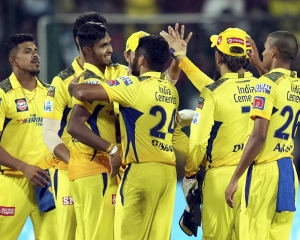This year's theme, ‘Radio: A century informing, entertaining and educating,’ serves as a strong reminder of radio's prowess in shaping culture and connectivity
In the symphony of the whirlwind of technological advancements, amidst fleeting platforms, radio stands as a steadfast beacon, heralding its second century as a revered medium. February 13th, a date enshrined as World Radio Day (WRD) by UNESCO in 2011 and ratified by the UN General Assembly in 2012, annually celebrates this enduring force. This year's theme, “Radio: A century informing, entertaining, and educating,” encapsulates its timeless significance. Globally acknowledged, WRD pays homage to radio's multifaceted prowess in technology, science, communication, and the artistry of audio programming. It embodies a century of unwavering service, steadfastness, and cultural resonance in an ever-evolving landscape.
Radio's origins trace back to the 1800s, whose power, position and influence are on the surge. Amidst the vast landscape of media, the enduring appeal of radio lies in its ability to transcend time and technological shifts. Its unique blend of immediacy, accessibility, and the power to connect communities has allowed it to weather the storms of innovation, emerging as a beacon of constancy.
Since its inception, radio has undergone a remarkable evolution from the discovery of electromagnetic waves to the sophistication of Digital Audio Broadcasting (DAB). Beginning with Hans Christian Oersted's observation of magnetic fields around electric currents in 1820, subsequent milestones include Michael Faraday's confirmation of electromagnetic induction in 1830 and James Clerk Maxwell's theoretical predictions in 1864. Heinrich Hertz's practical demonstration of electromagnetic waves in the late 1880s validated Maxwell's theories. Guglielmo Marconi's pioneering transmissions culminated in the first transatlantic signal in 1901, revolutionizing communication.
Reginald Fessenden's 1906 breakthrough enabled long-distance voice and music transmission, heralding commercial broadcasts. Lee De Forest's 1907 Audion signal detector and Edwin Armstrong's 1918 superheterodyne circuit advanced radio technology. Armstrong's 1933 FM discovery pledged clearer signals, offering a significant improvement over existing AM technology.
The inception of radio as a communication medium, dates back to December 24, 1906, when a crew on a ship in the Atlantic Ocean experienced a groundbreaking moment. Instead of the familiar Morse code clicks, they heard a human voice and music transmitted wirelessly by the inventor Reginald Fessenden. This marked the birth of sending sound through radio waves, opening up a new era of possibilities.
Despite initial setbacks, including the withholding of FM technology by (Radio Corporation of America) RCA's David Sarnoff in favour of television development, radio's popularity soared. Entertainment broadcasting commenced around 1910, with the establishment of the first commercial radio stations such as KDKA (by Westinghouse) in 1920 and WWJ in the same year. The period between the late 1920s and the early 1950s is regarded as the Golden Age of Radio, characterized by a diverse array of programming that captivated millions of listeners nationwide (USA).
From its colonial origins to modern-day significance, India's radio journey is a timeless allure. Post-independence, All India Radio's rise marked a pivotal shift, shaping national identity through iconic programs like ‘Binaca Geetmala’ and ‘Vividh Bharati’. Private FM stations expanded its reach, making radio a ubiquitous presence from rural to urban centers, serving as a vital lifeline and cultural touchstone. Amid technological advancements, radio's essence of informing, entertaining, and connecting endures, reminding us of the power of simplicity and human connection. It stands as a beacon of tradition, innovation, and unity in India's diverse landscape.Furthermore, radio holds a unique power in shaping collective memories. Take, for instance, the iconic program “Binaca Geetmala.” Merely pondering the year when a particular song graced the airwaves triggers a cascade of memories linked to that song, accompanied by the mellifluous narration of the esteemed broadcaster, Ameen Sayani. These reminiscences transport us to moments of joy and nostalgia, evoking the social ambiance of yesteryears.
Beyond its technological and scientific aspects, radio holds a unique position as a conduit for cultural exchange, fostering dialogue, and amplifying diverse voices.
The theme for World Radio Day, “Radio: A century informing, entertaining, and educating,” celebrates a timeless legacy, where the ethereal resonance of voices has woven an intricate tapestry of cultural embrace for a century. Radio stands as a steadfast companion, offering not just timely information and entertainment, but also serving as a beacon of education and unity, transcending barriers. Within its sanctuary of sound, negativity finds no haven; instead, the airwaves flourish with warmth and positivity, nurturing weary souls seeking solace in the harmonious embrace of human fellowship.
(The writer is programme executive, Gandhi Smriti and Darshan Samiti; views are personal)

























